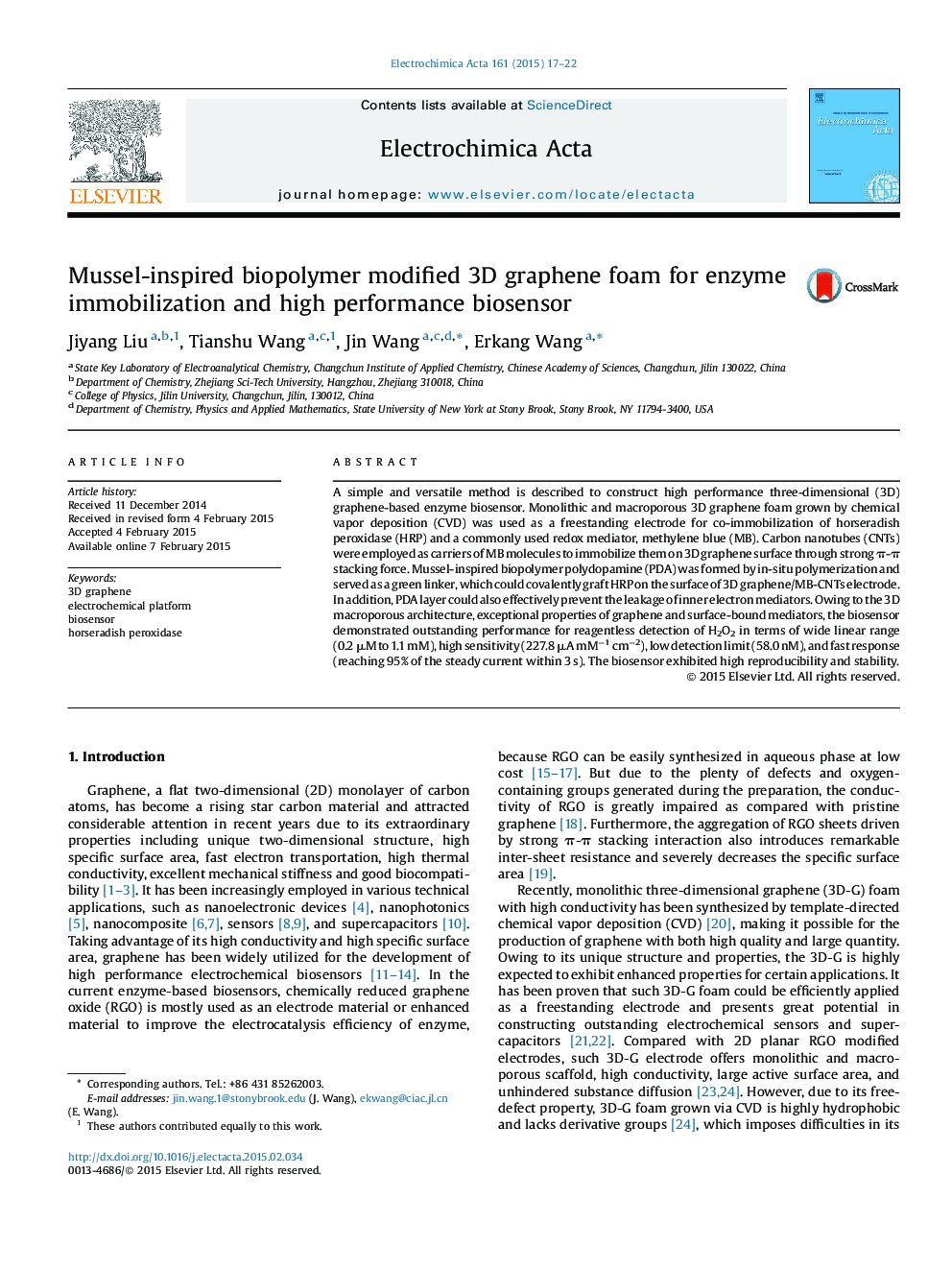| Article ID | Journal | Published Year | Pages | File Type |
|---|---|---|---|---|
| 184151 | Electrochimica Acta | 2015 | 6 Pages |
•Outstanding 3D biosensing platform was explored for reagentless detection of H2O2.•Monolithic 3D graphene foam served as a freestanding electrode scaffold.•MB-CNTs hybrid assembled on 3D graphene as efficient electron mediator.•Mussel inspired polydopamine as a green linker for enzyme immobilization.
A simple and versatile method is described to construct high performance three-dimensional (3D) graphene-based enzyme biosensor. Monolithic and macroporous 3D graphene foam grown by chemical vapor deposition (CVD) was used as a freestanding electrode for co-immobilization of horseradish peroxidase (HRP) and a commonly used redox mediator, methylene blue (MB). Carbon nanotubes (CNTs) were employed as carriers of MB molecules to immobilize them on 3D graphene surface through strong π-π stacking force. Mussel-inspired biopolymer polydopamine (PDA) was formed by in-situ polymerization and served as a green linker, which could covalently graft HRP on the surface of 3D graphene/MB-CNTs electrode. In addition, PDA layer could also effectively prevent the leakage of inner electron mediators. Owing to the 3D macroporous architecture, exceptional properties of graphene and surface-bound mediators, the biosensor demonstrated outstanding performance for reagentless detection of H2O2 in terms of wide linear range (0.2 μM to 1.1 mM), high sensitivity (227.8 μA mM−1 cm−2), low detection limit (58.0 nM), and fast response (reaching 95% of the steady current within 3 s). The biosensor exhibited high reproducibility and stability.
